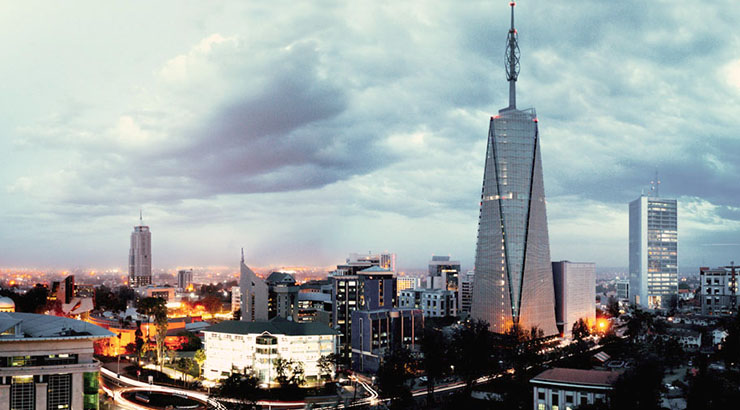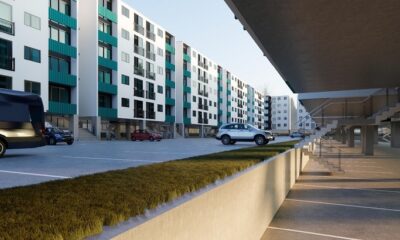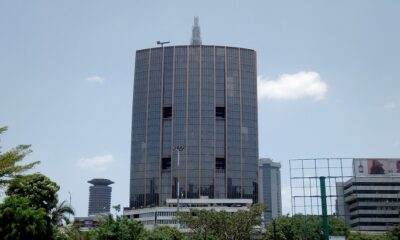Commercial Projects
Nairobi skyline to change forever as skyscrapers soar
The city has 17 buildings with a height of more than 100 metres.

The topping out of several skyscrapers in Nairobi has altered the list of tallest buildings in Kenya, with a total of 17 skyscrapers now boasting a height of more than 100 metres.
In 2015, CK reported how the city’s skyline was dotted with giant cranes as construction got under way on several ambitious projects worth billions of shillings.
Five years later, the progress is there for all to see, as stone-by-stone some of the largest construction schemes in the history of Kenya become a reality.
Upper Hill, which was then regarded as Africa’s fastest rising high-end central business district, was more like a vast construction zone, leading a building boom that was taking hold on key suburbs of Nairobi as investors rushed to meet the demand for offices in the city.
Standing 163m tall, UAP Old Mutual Tower in Upper Hill officially took the title of Kenya’s tallest building in 2016 – unseating Times Tower as the monarch of the regional sky.
However, after just a few months of recognition, the 33-storey tower lost the title to its taller neighbour Britam Tower – which rises 192m into the sky.
Owned by financial services company Britam Holdings Plc., Britam Tower is the tallest building in Kenya, and the third tallest building in Africa.
The tower is expected to retain the title for several years considering that Pinnacle Tower 1, which was expected to become the tallest building in the continent at a height of 314 metres has been delayed.
Also joining the list of iconic landmarks of Nairobi is the Global Trade Centre, a Sh40 billion development by Chinese multinational Avic – which is building its Africa headquarters in the Kenyan capital.
The six-tower complex, which is located in Westlands, has gifted Kenya its second tallest building – Nairobi GTC Office Tower – rising 184 metres towards the sky.
The GTC Hotel Tower is also a notable addition to the skyline at 141 metres, and so are the four residential towers of the GTC: tower 1 (116 metres); tower 2, 3 (109 metres) and tower 4 (103 metres).
The Kings Prism Tower, a 133-metre skyscraper in Upper Hill, added colour to the skyline when it was completed in 2018. The 34-storey building is designed to appear as prisms stacked upon prisms.
A short distance from Kings Prism Tower is 316 Upper Hill Chambers, a 104-metre tower located on 2nd Ngong Avenue, about 2km from the Nairobi central business district.
Owned by Upper Hill Chambers Ltd., the newly-built tower boasts 26 floors comprising three basement parking floors; ground floor; mezzanine floor; five upper parking floors; and 15 Grade A office floors.
The 2019 opening of Le’mac Towers in Westlands, off Waiyaki Way gifted Nairobi its tallest residential building – a title that will soon be taken over by 88 Condominium, which is coming up in Upper Hill.
Standing 126 metres tall, Le’mac Towers boasts a transparent glass floor skywalk located on the 24th floor of the building, which offers a great view of cars moving more than 100 metres below your feet.
In the central business district, construction of Parliament Tower is almost coming to a close, following the topping out of the Sh5.8 billion office block that ranks among the tallest buildings in Kenya.
Developed by the Parliamentary Service Commission, the 26-floor office block that rises 125 metres into the sky sits on a one-acre plot between Continental House and County Hall, next to Parliament buildings.
The Parliament Tower, joins its shorter but colourful neighbour – Central Bank of Kenya Pension House – which was recently completed on Harambee Avenue.
Though less than 100 metres tall, the CBK Pension House has earned its place as an iconic landmark of the city owing to its creative design that resembles two pensioners leaning in opposite directions.
The move towards constructing taller mixed-use towers has been ignited by a surge in land values in Nairobi, with a consequent need for developers to be more efficient with their sites, according to experts.
“With the high cost of land in Nairobi, you have only two options; either you increase the rent – which would mean a lower occupancy rate – or you increase the number of floors, hence the inclination to go vertical,” Anthony Kinja, a real estate consultant at Wealth Inc. Realtors, said in a past interview.
Mr Kinja argued that it was unlikely for investors to build new skyscrapers within the city centre as it would be uneconomical to do so due to the high cost of land.












